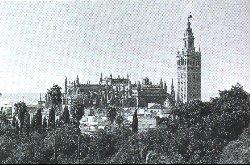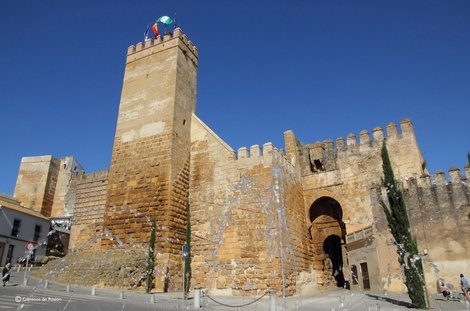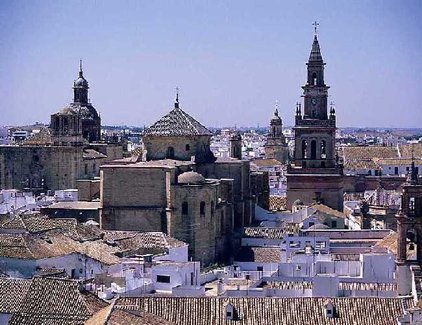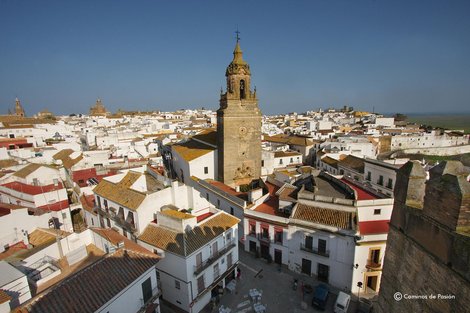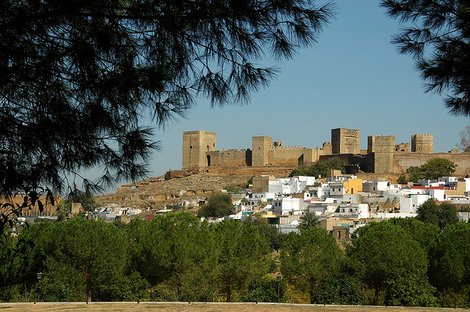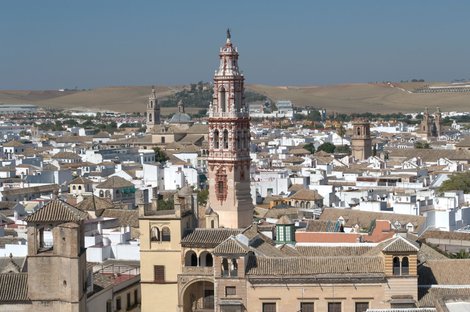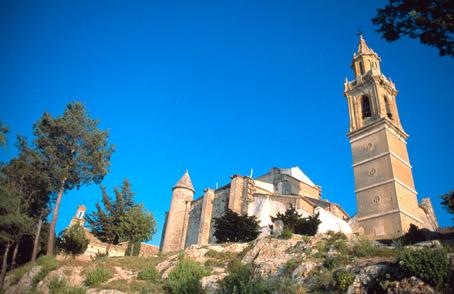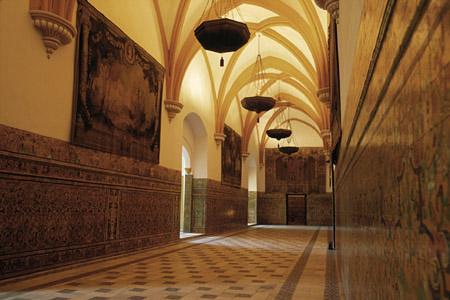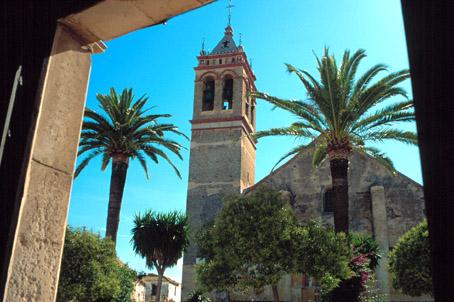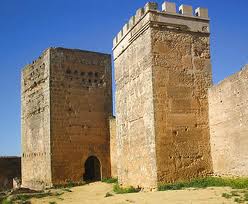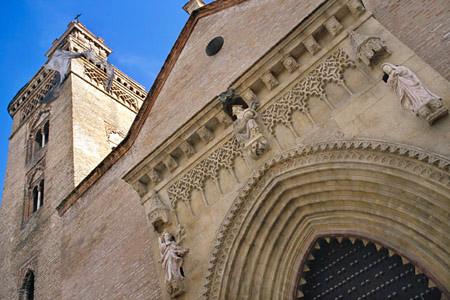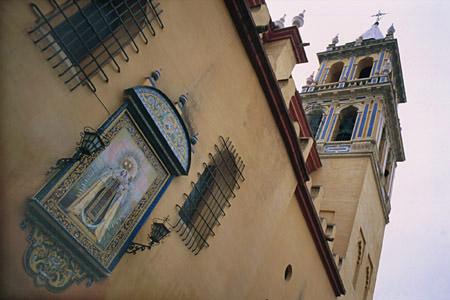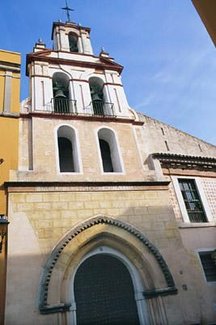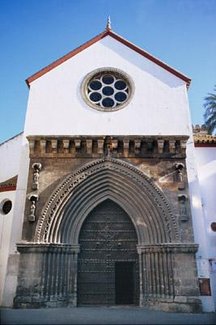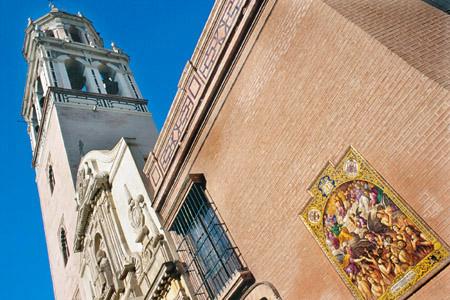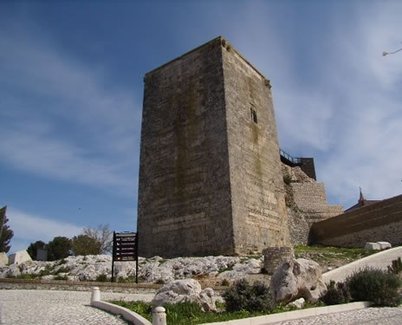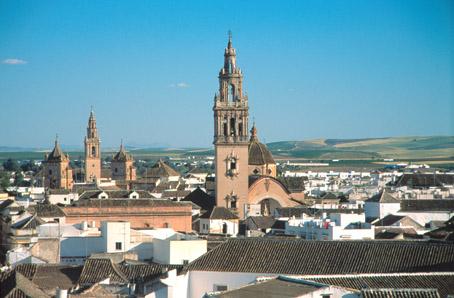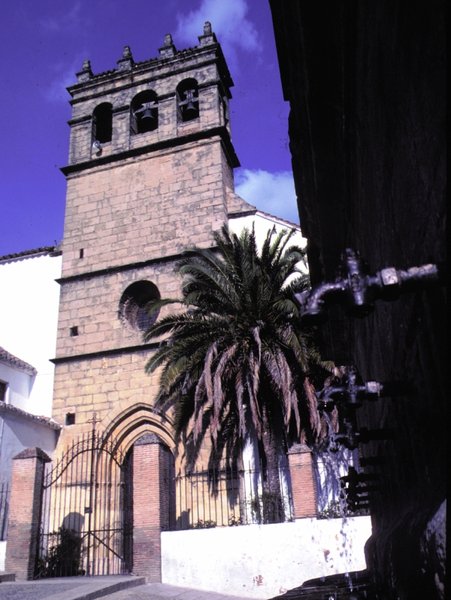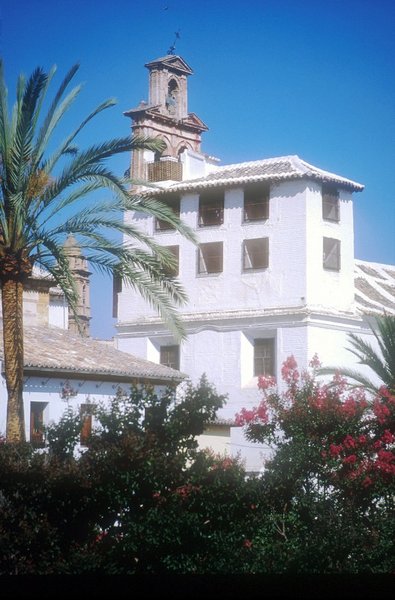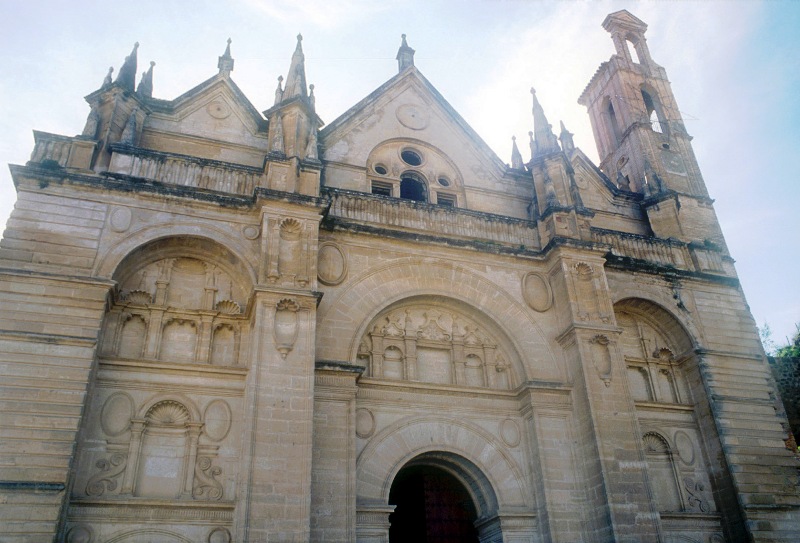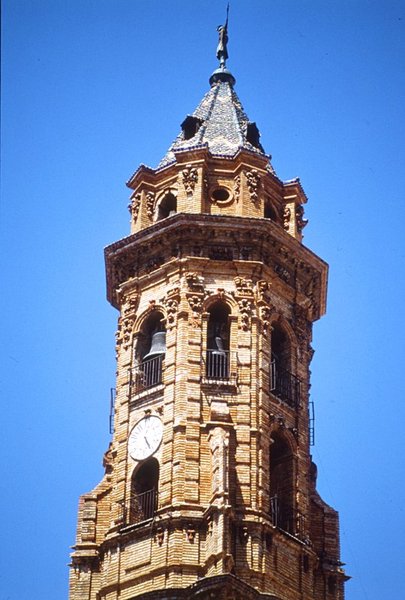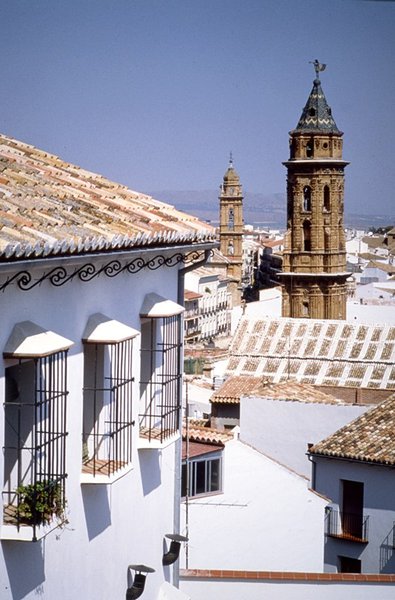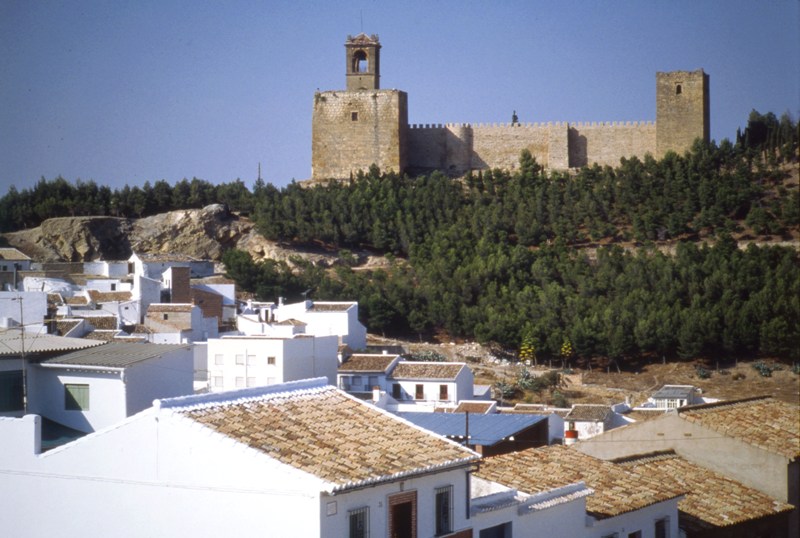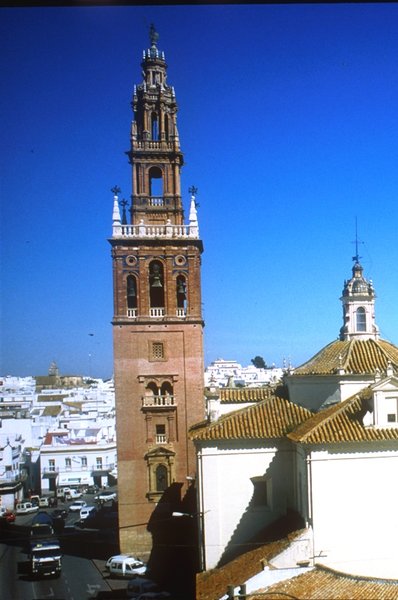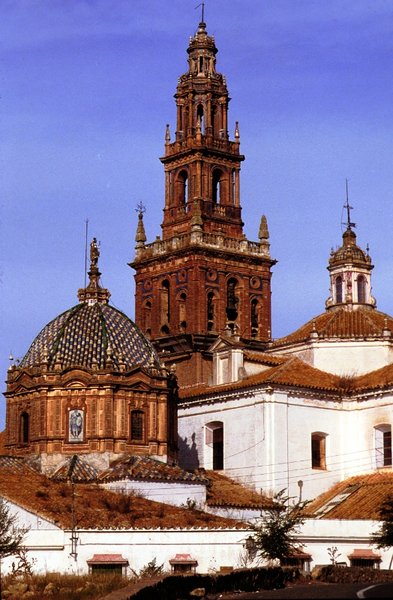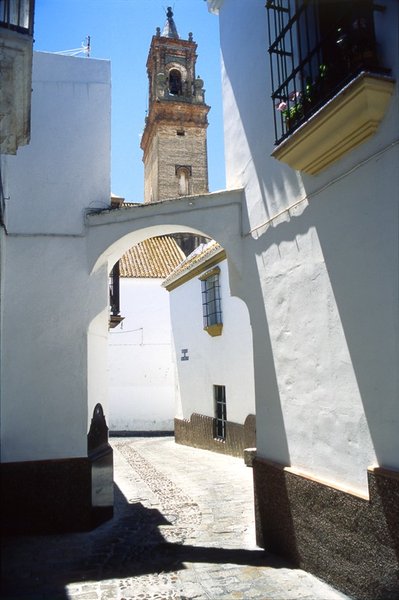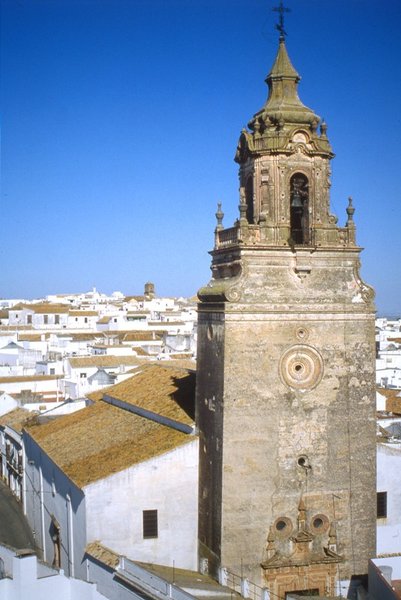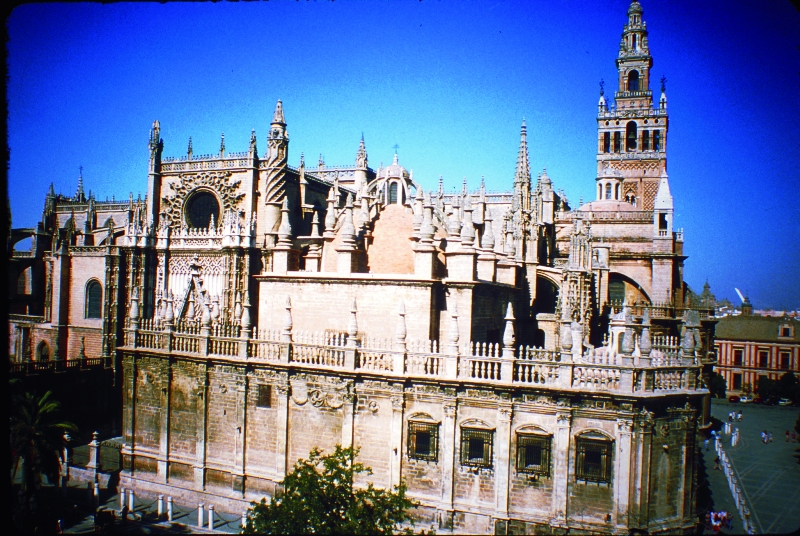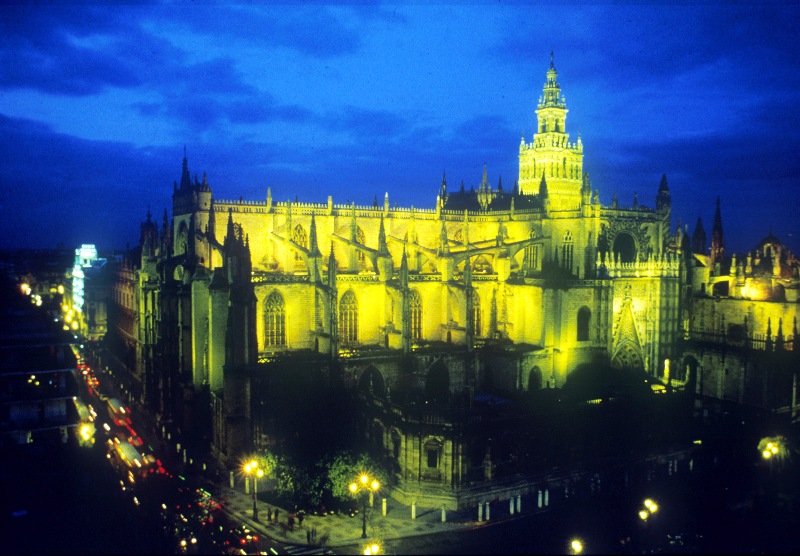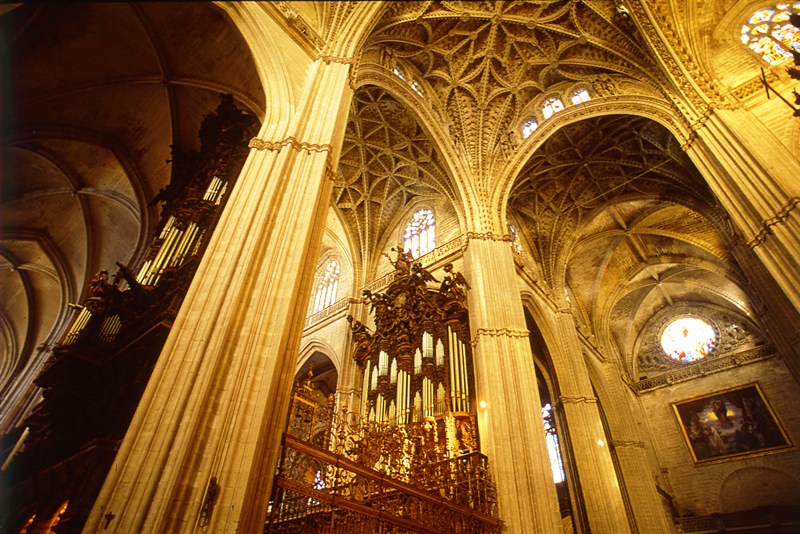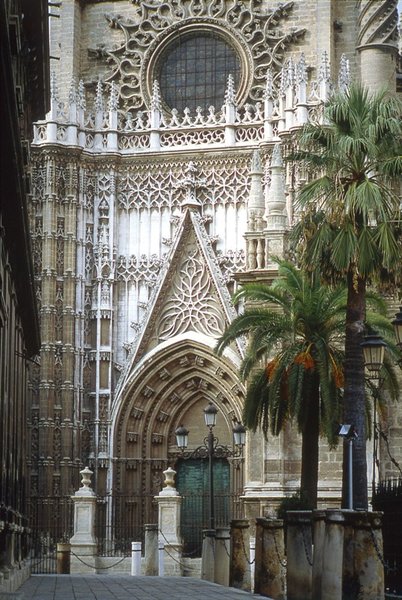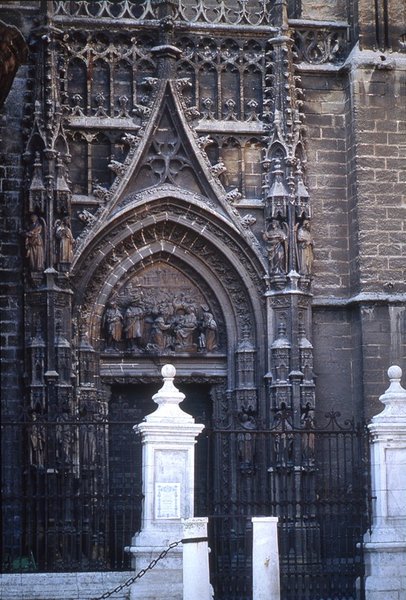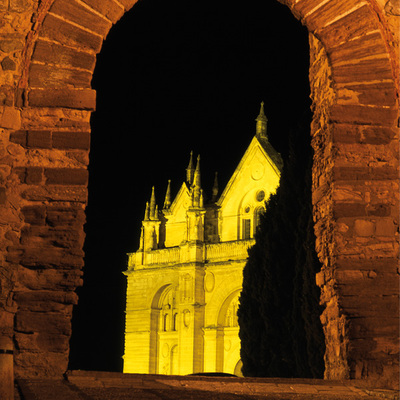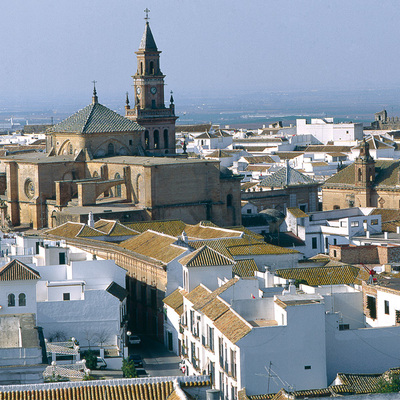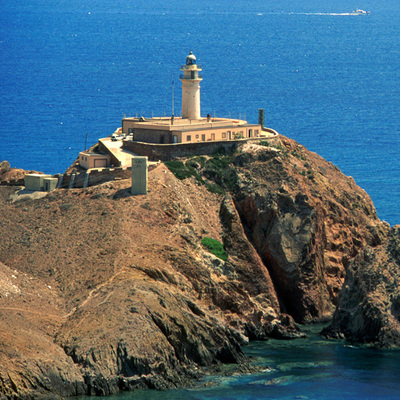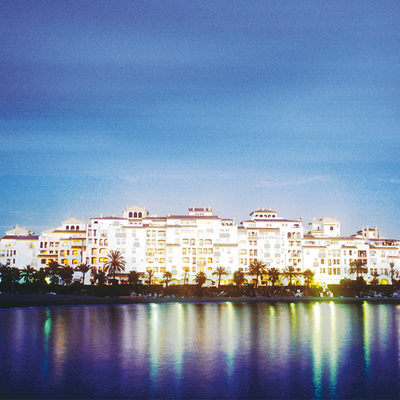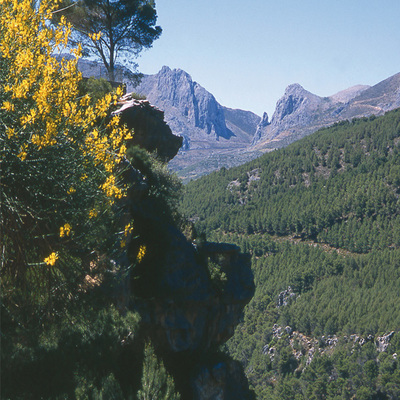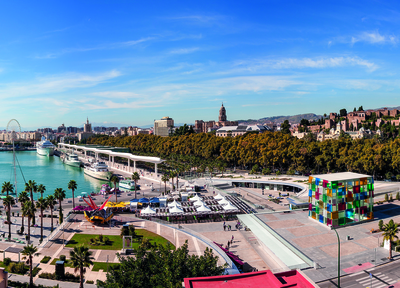The Kingdom of Sevilla
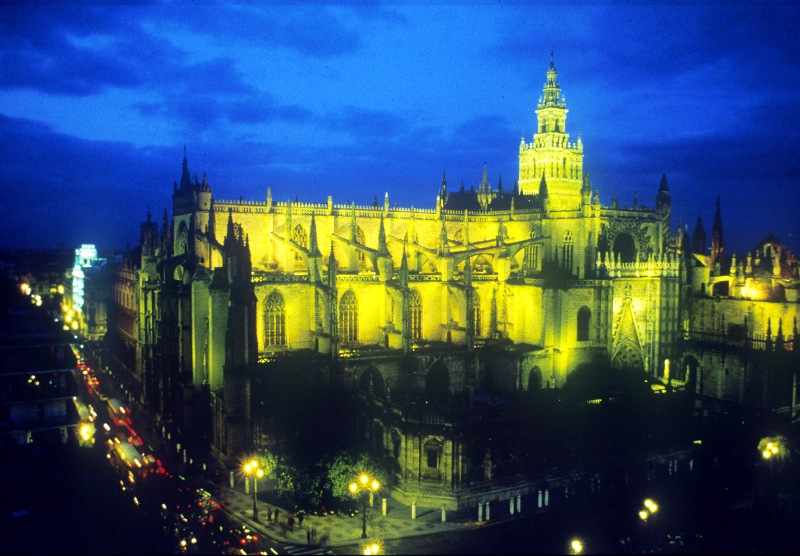
A tour of Seville is one of the most interesting in this guide. The Church of Santa Ana, built in the 13th century outside the city walls, in Triana, is an example of alfonsí Gothic with overtones from Córdoba.
That of San Gil in the Macarena quarter is an evolved example, and then in the 14th century a model of Sevillian Mudéjar parish churches became general: churches of one or three naves, Gothic facades, with stone below and sometimes on the sides, tower, rib vaulting, ribbed apses and predominance of brick in pillars and walls.
Examples are Santa Marina, San Julián, San Vicente, San Lorenzo, San Isidoro, Omnium Sanctorum - behind it there is the Mudéjar frontage of the Palace of the Marqués de la Algaba - San Esteban, San Román, San Andrés, San Pedro, San Marcos, San Juan de la Palma, San Nicolás and Santa Catalina. Mudéjar is also visible in the Carthusian monastery, La Cartuja. Late Gothic can be seen in the churches of San Martín and the Convent of Santa Inés, and it is the Cathedral, the largest Gothic church in Christendom, that is the most outstanding example of Gothic at the end of the Middle Ages in Seville.
The Alcázar comes under civil architecture. It includes the 13th century Gothic palace of Alfonso X and the Palace of Pedro I, a jewel of Andalusian Mudéjar, with its facade carved by builders from Granada and impressive dome in the Hall of Ambassadors. Also in Seville, the Tower of Don Fadrique is from the first Gothic period and so is that of La Plata. Eventually, Mudéjar overlapped into the Renaissance, as can be seen in the palaces of Las Dueñas and Pilatos.
The larger towns in the lowlands of Seville that are always interesting to see are included in the 2nd itinerary, with stops at Alcalá de Guadaira (castle, Castillo de Marchenilla, Church of Santiago), Carmona (Alcázar del Rey Don Pedro, churches of Santiago, San Felipe, San Bartolomé, Santa María, Hermitage of San Mateo and the houses around the square), Marchena (churches of San Juan, San Miguel, Santa María de la Mota and chapel of La Vera Cruz). The tour continues in Ecija (churches of Santiago and Convent of Las Teresas, difficult to see) and Estepa (the keep at the Alcázar and Church of Santa María), thence on the "Moorish strip". The itinerary can end in Antequera, in the province of Málaga (churches of the convents of San Francisco and La Encarnación), where Mudéjar also continued on into the Renaissance (collegiate Church of Santa María la Mayor) and into the Baroque (Tower of San Sebastián)

